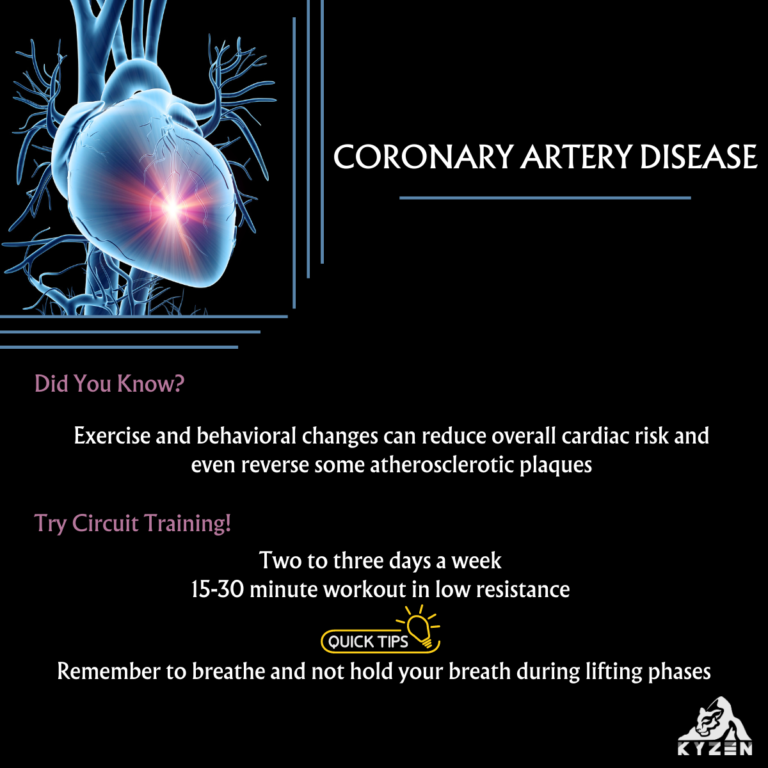The Remarkable Benefits of Fitness for Coronary Artery Disease
Coronary artery disease (CAD) is a common and potentially life-threatening condition characterized by the narrowing or blockage of the coronary arteries that supply blood to the heart. Managing CAD is crucial to improving the overall quality of life and reducing the risk of complications. In recent years, fitness and exercise have emerged as integral components of CAD management, providing a range of remarkable benefits. We will explore the various advantages of fitness for individuals with coronary artery disease.
1. Improved Cardiovascular Health:
Regular exercise plays a pivotal role in improving cardiovascular health for individuals with CAD. Engaging in aerobic activities, such as brisk walking, cycling, or swimming, can strengthen the heart muscle, enhance blood circulation, and improve overall cardiac function. As a result, exercise helps to reduce the workload on the heart and lowers blood pressure, contributing to a healthier cardiovascular system.
2. Enhanced Blood Lipid Profile:
One of the primary risk factors for CAD is an unfavorable lipid profile, characterized by high levels of cholesterol and triglycerides. Fitness interventions, combined with a healthy diet, can lead to significant improvements in lipid levels. Exercise promotes the production of high-density lipoprotein (HDL) or “good” cholesterol while reducing low-density lipoprotein (LDL) or “bad” cholesterol. This shift in the lipid profile helps to prevent the buildup of plaque in the coronary arteries, reducing the risk of further complications.
3. Weight Management:
Maintaining a healthy weight is essential for individuals with CAD. Engaging in regular exercise helps to burn calories, increase metabolism, and build lean muscle mass, thereby aiding in weight management. By shedding excess weight and reducing body fat, individuals with CAD can alleviate the strain on their cardiovascular system, leading to improved heart health.
4. Stress Reduction:
Chronic stress can significantly impact heart health, exacerbating the symptoms of CAD. Regular exercise acts as a natural stress reliever by triggering the release of endorphins, which are known as the “feel-good” hormones. Exercise can help individuals manage stress and anxiety levels, improve their mood, and enhance their overall sense of well-being. By reducing stress, exercise indirectly benefits the heart and contributes to better management of CAD.
5. Increased Energy and Stamina:
Individuals with CAD often experience fatigue and a lack of energy due to reduced blood flow to the heart. Engaging in regular physical activity can help combat these symptoms. Exercise strengthens the heart muscle, improves oxygen utilization, and boosts overall endurance and stamina. As a result, individuals with CAD who engage in fitness activities may experience increased energy levels and a greater ability to perform daily tasks without excessive fatigue.
6. Enhanced Quality of Life:
By incorporating regular exercise into their routine, individuals with CAD can experience an improved quality of life. The physical and psychological benefits of exercise, such as increased mobility, reduced symptoms, improved self-esteem, and enhanced mood, can lead to a more fulfilling and active lifestyle. Engaging in fitness activities can empower individuals to take control of their health and manage CAD more effectively.
Conclusion:
Fitness is a powerful tool for managing coronary artery disease. The benefits of regular exercise for individuals with CAD extend beyond physical health and encompass improved cardiovascular function, enhanced lipid profiles, weight management, stress reduction, increased energy, and an overall better quality of life. However, it is crucial to consult with healthcare professionals before starting any exercise program to ensure it is safe and appropriate for an individual’s specific condition. By embracing fitness, individuals with CAD can take significant strides towards better heart health and a brighter future.

